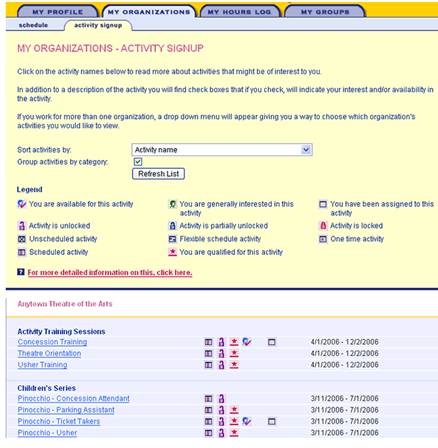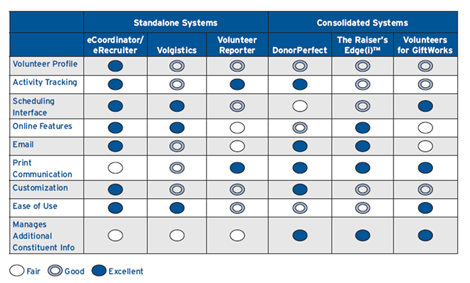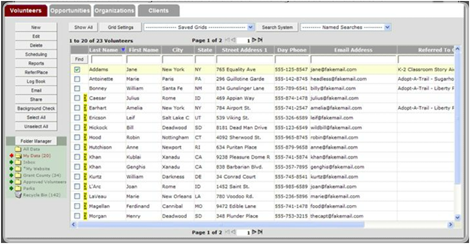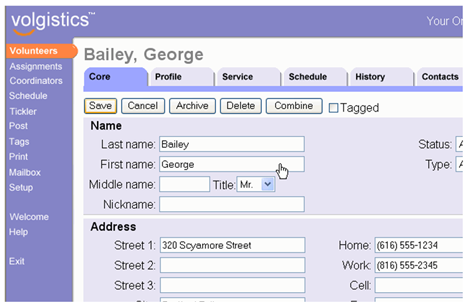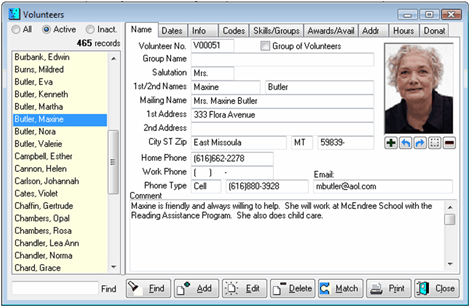Techsoup and Idealware recently released “A Consumer’s Guide to Software for Volunteer Management,” a review of commonly used systems. Part 1 of this series provided a brief summary of the report. In Part 2, we provide a supplement to this report specifically for arts organizations.
How is volunteer management at arts organizations different from volunteer management across the non-profit sector? The arts sector is extremely diverse, just like the non-profit sector. Budget size, mission, discipline, resources, and the ways in which volunteers are involved in the organization vary widely. I think the main thing that sets us apart, however, is that our volunteers wear many hats, including artist, freelance employee, board member, or other constituent. It’s very hard to put our volunteers in a box, especially with small organizations whose volunteers do everything.
With that said, I think that for many arts organizations, consolidated systems (systems that work with the wider Constituent Relationship Management database) are the best bet, especially since so many have a CRM in place already. Part 1 touched on the strong and weak points of DonorPerfect, The Raiser’s Edge, and Volunteers for GiftWorks, which according to the NTEN 2008 Donor Management Software Satisfaction Survey together handle the donor management needs of 31.8% of non-profits in the country. However, if you’re one of the 6% or so who use a custom-built CMS based on Excel or Access, don’t feel pressured to upgrade. If you don’t ask your volunteers to do anything more complicated than usher, stuff programs, or do occasional filing in the office, you probably don’t need the bells and whistles offered by donor and constituent systems.
When should you think about upgrading to using a volunteer management system, either consolidated or standalone?
- If you have a large number of volunteers (say, over 300)
- If you have many different jobs that you need volunteers to do
- If the jobs require training
- If the jobs require specialized knowledge
- If the jobs require artistic ability
- If your organization requires background or reference checks for volunteers
Let’s take a look at some different types of arts organizations that use both standalone and consolidated volunteer management systems.
Festivals
For festivals that happen once a year, a large number of volunteers sign up in a short amount of time, and the scheduling can get complicated with all the different roles and shifts. The Sausalito Art Festival Foundation in California uses the stand-alone system Volunteer Hub so that volunteers can sign up, register, and update their contact information on their own, as well as browse specific events that need volunteers. The system automatically puts volunteers on a waitlist once enough that have signed up.
Volunteer Hub is cloud-based, and the price depends on the number of volunteers. The system seems to be a great fit for an arts festival, especially one that isn’t run by a large organization with the staff to devote to volunteer management.
Performing Arts Centers
A stand-alone software that seems to be popular among performing arts centers is Theatre Volunteer Software out of Ontario. It’s a comprehensive system that has both a volunteer web portal (MyVolunteerPage.com) and a manager interface (Volunteer Impact). There’s really not much that this system can’t do. On MyVolunteerPage.com, a volunteer can:
- fill out an application
- enter and update their contact information
- search and sign up for jobs
- view and confirm schedules (they can choose between “not sure yet”, “confirm”, and “decline”)
- log hours worked and view hours reports
- answer any question you want to ask them: why they are interested in volunteering, interests, availability
On the other side of the system, through Volunteer Impact, a manager can:
- receive alerts about new applications and confirmations
- view a dashboard that includes analytics on click-throughs from the volunteer portal to a sponsor’s website
- set minimum qualifications for a job
- set a cap on how many volunteers can sign up for a job
- do all sorts of queries to find volunteers
- send personalized emails as well as direct mail to volunteers found through queries
- create phone lists
- create an automatic welcome email that is sent once a volunteer applies
- create and view all sorts of customizable reports
The price for this Canadian creation is just under $1000 for the set up and then an annual fee of approximately $1 per volunteer. It’s used by the Cincinnati Arts Association, and another client says “it’s like having a 24/7 employee.”
Museums
Museums have some of the most diverse volunteer needs. Between docents, children’s activities, greeters, data entry, surveyors, and summer camps, museums typically have a relatively large army of volunteers of varying skill levels. From limited internet research, it seems that many use Volunteer Works (or its updated version Volgistics) or some other large consolidated system covered in Part 1.
Another system that seems to be popular (especially to our neighbors to the north) is Wild Apricot, although this system seems to be more geared toward membership and donor management than volunteer management. However, starting at $25 a month with an easy to understand interface, it may be just the ticket for a smaller organization.
Room for Research
There is a lot of room for research on volunteer management at arts organizations. There are so many questions that haven't been answered in a quantitative way, such as:
- What kinds of jobs do volunteers do for arts organizations?
- What kinds of systems do organizations currently use to manage their volunteers?
- What are the needs of arts organizations regarding volunteer management? What are the day-to-day needs, and what would be nice to have?
- What kinds of CRM software do arts organizations use, and can their volunteer management needs be met by their existing software?
- What kinds of arts organizations use standalone volunteer management software, and what software do they use?
Then there is the topic of using technology to enable organizations to move beyond the nuts and bolts of getting things done to embracing emerging and best practices like volunteer feedback, getting current volunteers to recruit new volunteers, communicating and celebrating volunteers’ contributions, and informing volunteers of organizational developments and news. There’s a great article from NTEN about using Facebook to engage volunteers that is a great start in this area. But there is a lot of room for more research to help our volunteers help us.
You can help start the research by filling out our poll below!
[polldaddy poll=5142935]







